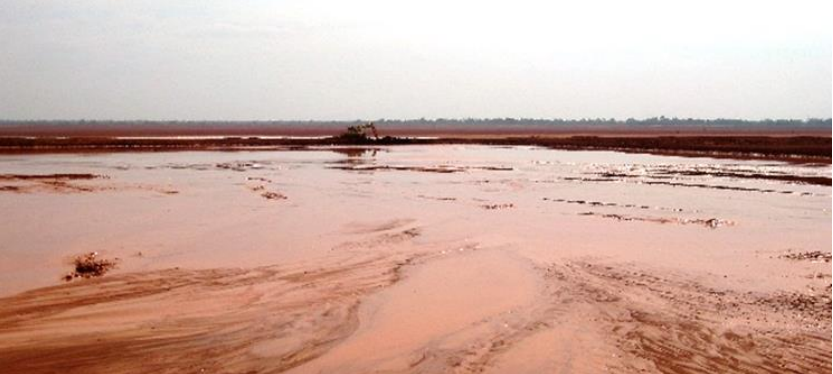Transforming Mining Tailings into Sustainable Resources
April 22, 2024 |

The Art of Tailings Farming
In the search for sustainable mining practices, one innovative approach is tailings farming. This technique transforms wet tailings, a byproduct of mining operations, into a resource that can be used for tailings stack construction reducing the area required for storage, failure consequences and the requirements for external borrow. A critical factor is evaporation, which controls the time it takes to convert tailings from a slurry to a competent fill. In high evaporation areas like Australia, this process can take as little as 3 to 6 weeks. However, in low evaporation regions such as Canada, it may extend up to 4 years.
What is Tailings Farming?
Tailings farming is a meticulously designed process aimed at maximizing supernatant water runoff and evaporation. This strategy is crucial for converting slurry or thickened tailings into a competent fill, which is capable of compaction. The ultimate goal is to repurpose these tailings into a stable, manageable material that can support sustainable mining operations.
The Four Steps of Tailings Farming
The transformation of tailings through farming involves a series of carefully planned steps:
Step 1: Site Preparation
The initial stage involves preparing the tailings beach, which is divided into cells approximately 150 meters wide, parallel to the dam crest. For flat beaches, a confining dyke made from excavated and bucket-dumped tailings is constructed approximately 100 meters offshore and stands 0.5 meters high. This preparation is crucial for controlling the tailings deposition and facilitating the subsequent farming processes.
Step 2: Managing Slurry Overflow and Initial Drying
Once the slurry starts to overtop the confining dyke, indicating that the cell is full, deposition is halted. The process then waits until desiccation cracks first appear on the surface. At this point, small trenches are excavated in the cell surface using amphibious excavators, allowing for the free runoff of consolidation water. This step is vital for initiating the drying process and preparing the tailings for further treatment.
Step 3: Accelerating Evaporation
To prevent the formation of a crust on the surface, which can impede evaporation, amphibious excavators periodically turn the tailings. This step is essential for accelerating the drying process, ensuring that the tailings become more manageable and closer to becoming a competent fill.
Step 4: Compaction and Final Preparation
After a period of waiting, which can range from a few weeks to several months depending on environmental conditions, the tailings reach a state where they are competent for further processing. At this stage, a swamp dozer and eventually a compactor are deployed to compact the tailings, finalizing their transformation into a sustainable resource.
The Impact of Tailings Farming
Maximising the effect of solar drying reduces the energy needed to lower the water content and improves the strength in the tailings, to the point where it becomes a potentially competent fill material. Because the strength of the tailings is increased, the deposition area can be reduced by increasing the allowable height and steepening external slopes of the tailings impoundment, thereby reducing the impacted area. Using the tailings itself as dam fill reduces the need for external borrow, which again reduces the impacted area. By reducing the water content and increasing the density of the fill the potential consequences of a dam failure are reduced.
Related Posts
Drones Support BC’s Emergency Flood Response
March 22, 2022 |
Klohn Crippen Berger (KCB) was called to respond to various sites impacted by a series of atmospheric river events that swept across British Columbia in November 2021. These events led to floods and debris flows that caused widespread damage to critical transportation infrastructure, including washouts of several culverts adjacent to our client sites.
A Quick, Safe Response with Drones
Unable to access the site on foot, the team needed a way to perform site investigation and collect data on the extent of the damage. For the past three years, KCB has utilized unmanned aerial vehicles (UAVs), or drones, to help our clients visualize sites and identify potential issues from different vantage points. During emergency climate events, drones have been a crucial tool in collecting data quickly, safely, and cost-effectively.
A Drone’s Eye View
KCB’s geotechnical professionals carried out an initial assessment of the damage, as well as inspections of the debris flow initiation and runout zones using a drone. Aerial footage gathered from the sites allowed them to quickly identify any hazardous conditions that still existed, as well as assess the volume of material that had been eroded.
Data in the Clouds
Using cloud-based UAV data processing and sharing, KCB was able to quickly share their findings with the client and begin developing design options for a remediated stream crossing. KCB used drones throughout construction to track infill volumes, assess whether ongoing erosion was occurring, and provide regular updates and guidance to the client, including 3D models of the worksite and marked-up sections. The cloud-based UAV processing allowed for a same-day turnaround of data and models.
Rebuilding with Resilience
With KCB’s guidance, the client was able to restore service using a temporary culvert and flume within a week of the washouts. KCB remained on-site to assess the performance of the temporary culvert and provide recommendations on construction of a permanent structure which would be able to withstand future atmospheric river events.
 About the Author
About the Author
Christian Sampaleanu is an Engineering Geologist in KCB’s Power and Transportation group, based in our Vancouver office. His areas of expertise include slope stability, geohazards, geomorphology and rock mechanics.
